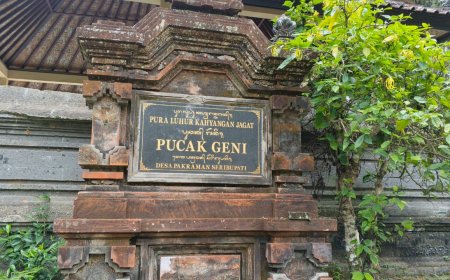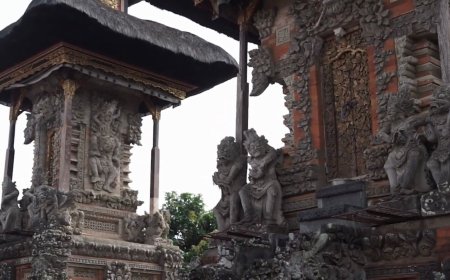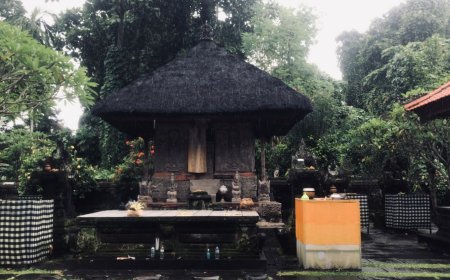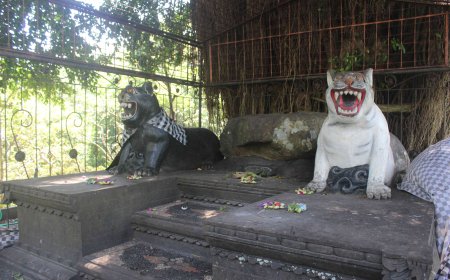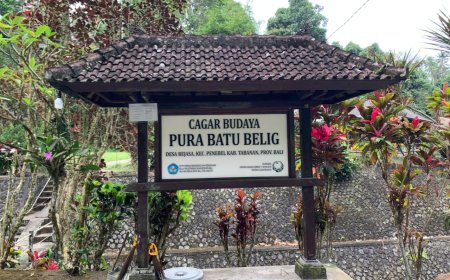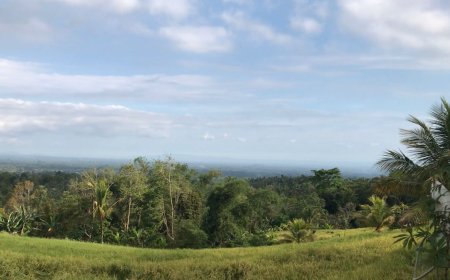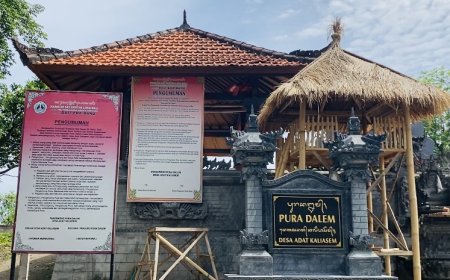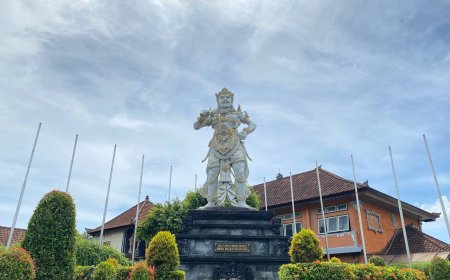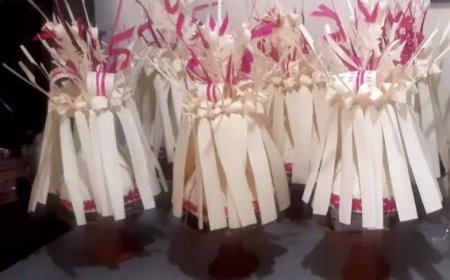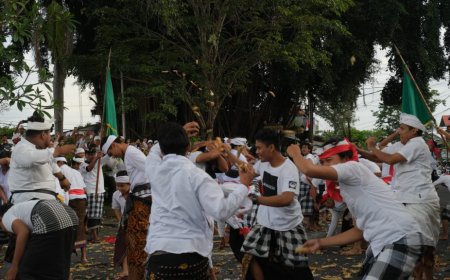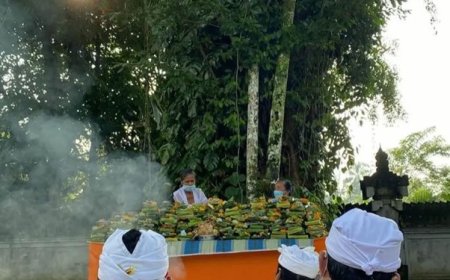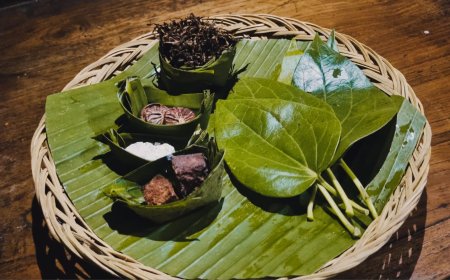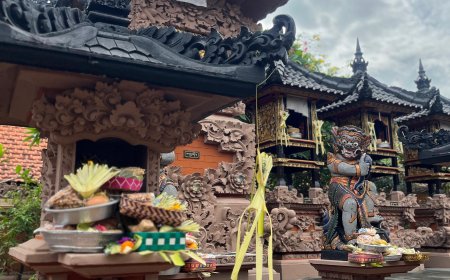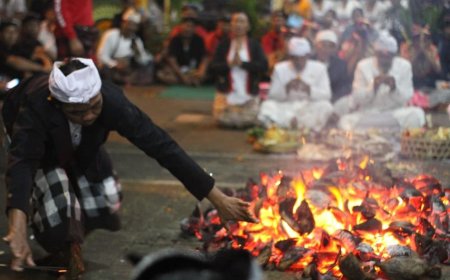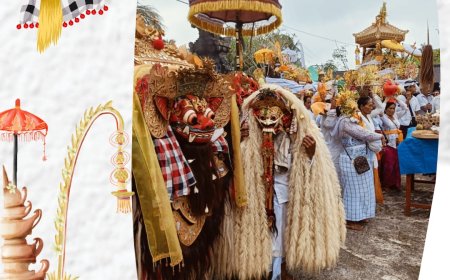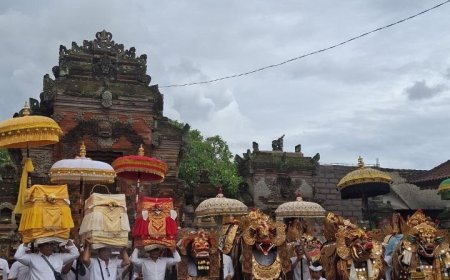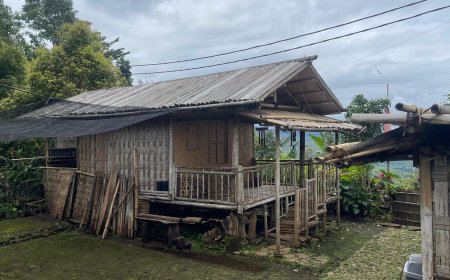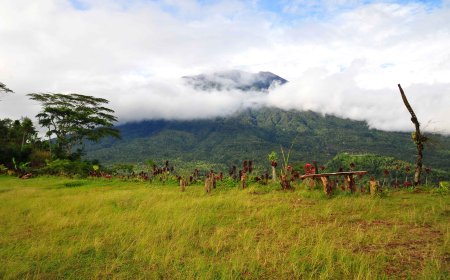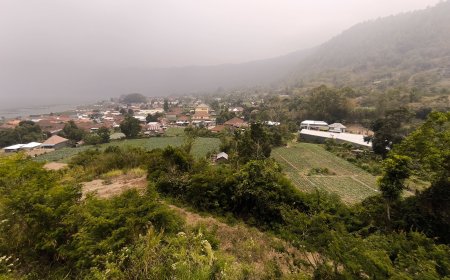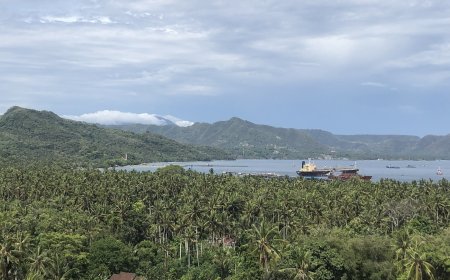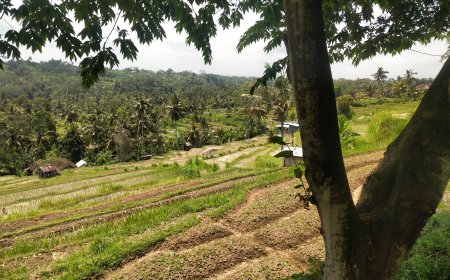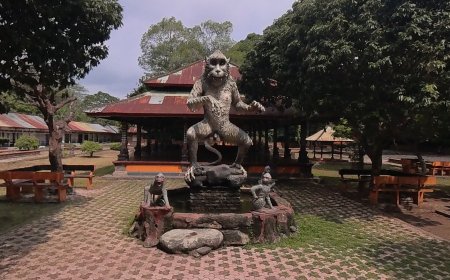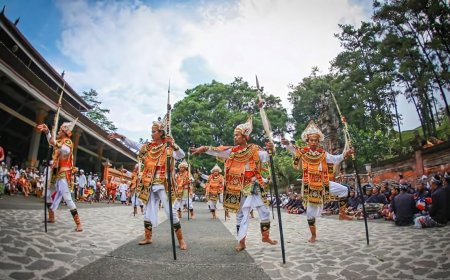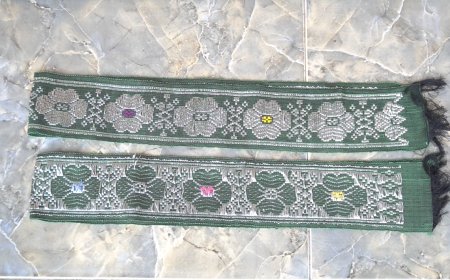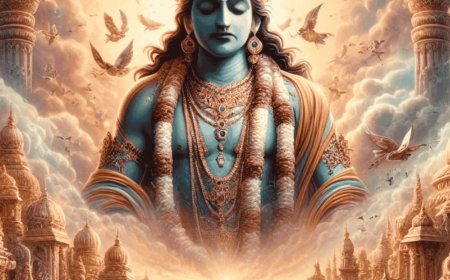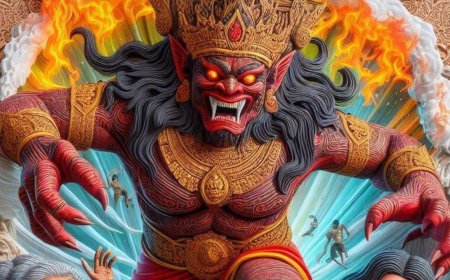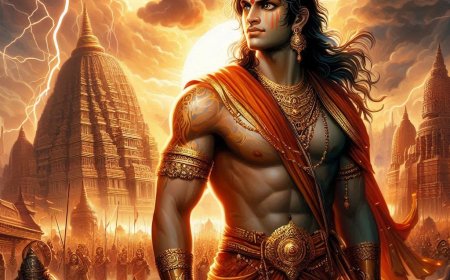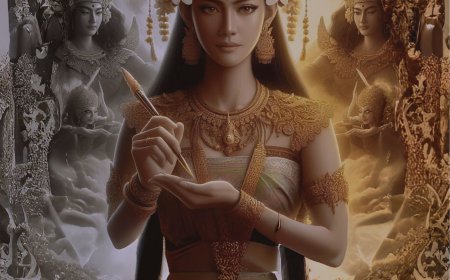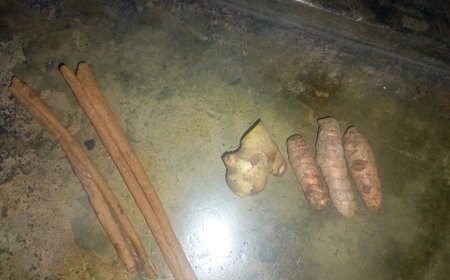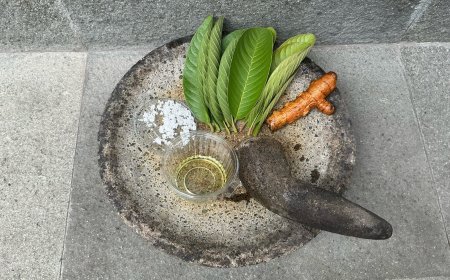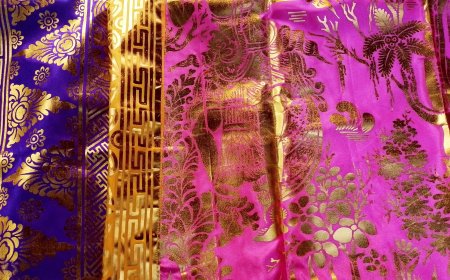Penjor: A Cosmic Representation, Symbol of Natural Harmony and Spirituality in Balinese Culture
Penjor, a distinctive symbol in Balinese culture, is more than just a ceremonial decoration. With its tall, curved shape, it symbolizes the relationship between humans, nature, and God. In Balinese tradition, the Penjor is not only an offering but also a representation of Mount Agung, the dwelling place of the gods. The philosophy behind the Penjor reflects Tri Hita Karana, emphasizing harmony between people, nature, and the divine. As a spiritual symbol, it reminds us of the importance of balance in life and our role as beings connected to a greater force. It also portrays the inner human struggle where purity and virtue must always be maintained—a peak of spiritual journey expressed in a beautiful form that delivers a message of peace and harmony to the universe.
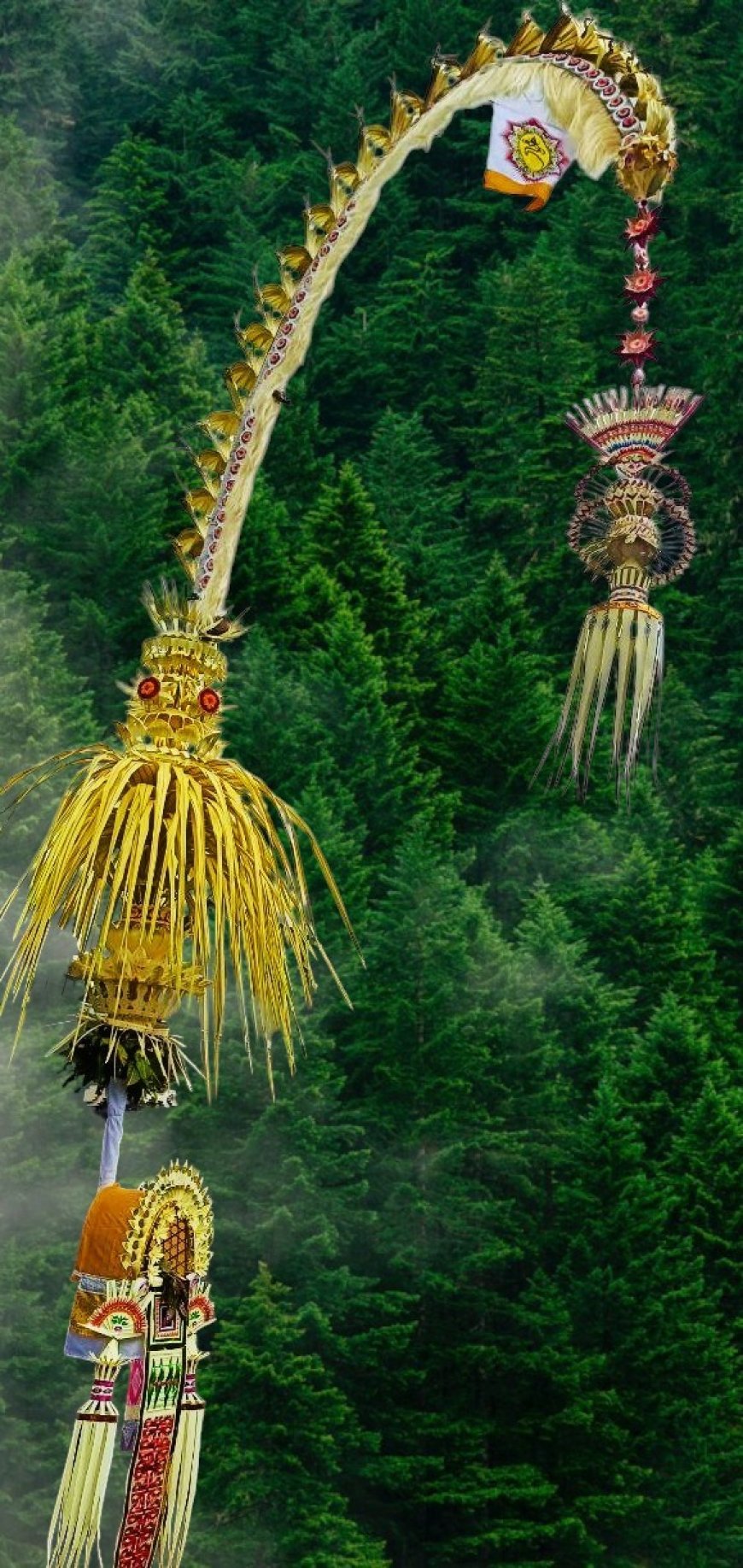
Penjor, a tall, arching bamboo decoration, is one of the most iconic symbols in Balinese culture. Far beyond being a mere ornament for religious ceremonies, Penjor holds profound philosophical meaning, illustrating the connection between humans, nature, and the spiritual realm. Every element of the Penjor—from its shape to its materials and positioning—carries symbolism that invites reflection on the harmony of the universe and the spiritual journey of humanity.
Form and Structure of the Penjor: A Cosmic Representation
Typically made from a curved bamboo pole, the Penjor mimics the shape of a mountain, with its tip reaching skyward. In Balinese belief, mountains are the dwelling places of the gods. Mount Agung, in particular, is revered as the spiritual center of Bali, a sacred point believed to connect the human world with the divine. The arched shape of the Penjor symbolically represents Mount Agung, linking the upper realm (the spiritual world) with the lower realm (the human world).
At the base of the Penjor, various offerings—such as fruits, flowers, and leaves—are presented to the gods. These offerings are acts of devotion to Sang Hyang Widhi Wasa (the Supreme God) as well as to ancestral spirits believed to protect and bless humankind.
Symbolism of Naga Basuki: Guardian and Fertility
A significant element of the Penjor is its arching form, reminiscent of a dragon. Naga Basuki, a mythical serpent, symbolizes prosperity, protection, and fertility in Balinese culture. It embodies the balance between spiritual power and earthly nature. Its presence in the Penjor reflects the hope for ongoing harmony in the universe and well-being for both humanity and the natural world.
Moreover, the naga also represents the soul’s journey toward enlightenment. In Hinduism, the spiritual path is often depicted similarly to the dragon’s symbolism—a long journey involving sacrifice, struggle, and eventual spiritual awakening.
Penjor as a Symbol of Tri Hita Karana Harmony
The Balinese philosophy of Tri Hita Karana teaches the importance of maintaining harmony in three essential relationships: between humans and God (Parhyangan), among fellow humans (Pawongan), and between humans and nature (Palemahan). The Penjor is a manifestation of this philosophy, serving as a reminder for Balinese people to uphold harmony in all these aspects.
Penjor are installed along roads in the lead-up to the Galungan and Kuningan festivals, as expressions of gratitude for divine blessings and prayers for a better future. In this way, the Penjor becomes a spiritual bridge between the physical and spiritual realms, between humanity and nature, and between the living and their ancestors.
Penjor in Ritual and Daily Life
Beyond its philosophical meaning in religious contexts, the Penjor also plays a role in the daily lives of Balinese people. Each time a Penjor is erected, it serves as a reminder to live with simplicity and virtue. It encourages a life rooted in gratitude, hard work, and balance in all aspects of existence.
It also reminds the Balinese to remain humble before God and nature and to nurture good relationships with others and with the environment. The belief is that by maintaining harmonious relationships with the divine, fellow humans, and nature, peace and prosperity will prevail.
Penjor: A Devotional Offering to the God Residing on Mount Agung
The Penjor is not merely a festive symbol but a grand offering from the Balinese Hindu community to God, manifested as the Mountain Deity believed to reside on Mount Agung—the spiritual axis of Bali. According to the sacred texts Lontar Jayakasunu and Basuki Stawa, the Penjor symbolizes Mount Agung as the sacred mandala of the universe, while the body of Naga Basuki represents the force guarding the world’s balance. Behind its beautiful form, the Penjor is an expression of gratitude for life’s blessings—prosperity, peace, and welfare—flowing from the divine energy of Mount Agung. It reflects the people's love and sincerity in welcoming the divine presence and reaffirms the cosmic awareness of the sacred relationship between humans, nature, and the Creator.
Penjor: A Reflection of Life’s Ongoing Journey
With all its symbolism and meaning, the Penjor mirrors the spiritual journey of humankind. It teaches that life is a long path requiring patience, sacrifice, and continuous effort to achieve harmony with God, with others, and with the universe. In every arch of its bamboo, the Penjor reminds us of a life journey full of hope, struggle, and eventual enlightenment.
Ultimately, the Penjor is far more than an ornamental fixture in ceremonies—it is a living symbol imbued with deep teachings about the balance and harmony between the physical and spiritual worlds. It serves as a reminder for every individual to live mindfully, to strive for harmony in all aspects of life, and to maintain good relationships with all of God's creations. With its radiant beauty, the Penjor stands as an eternal symbol in Balinese culture—a sign of unending spiritual pursuit, toward a life that is better, more harmonious, and deeply meaningful.
